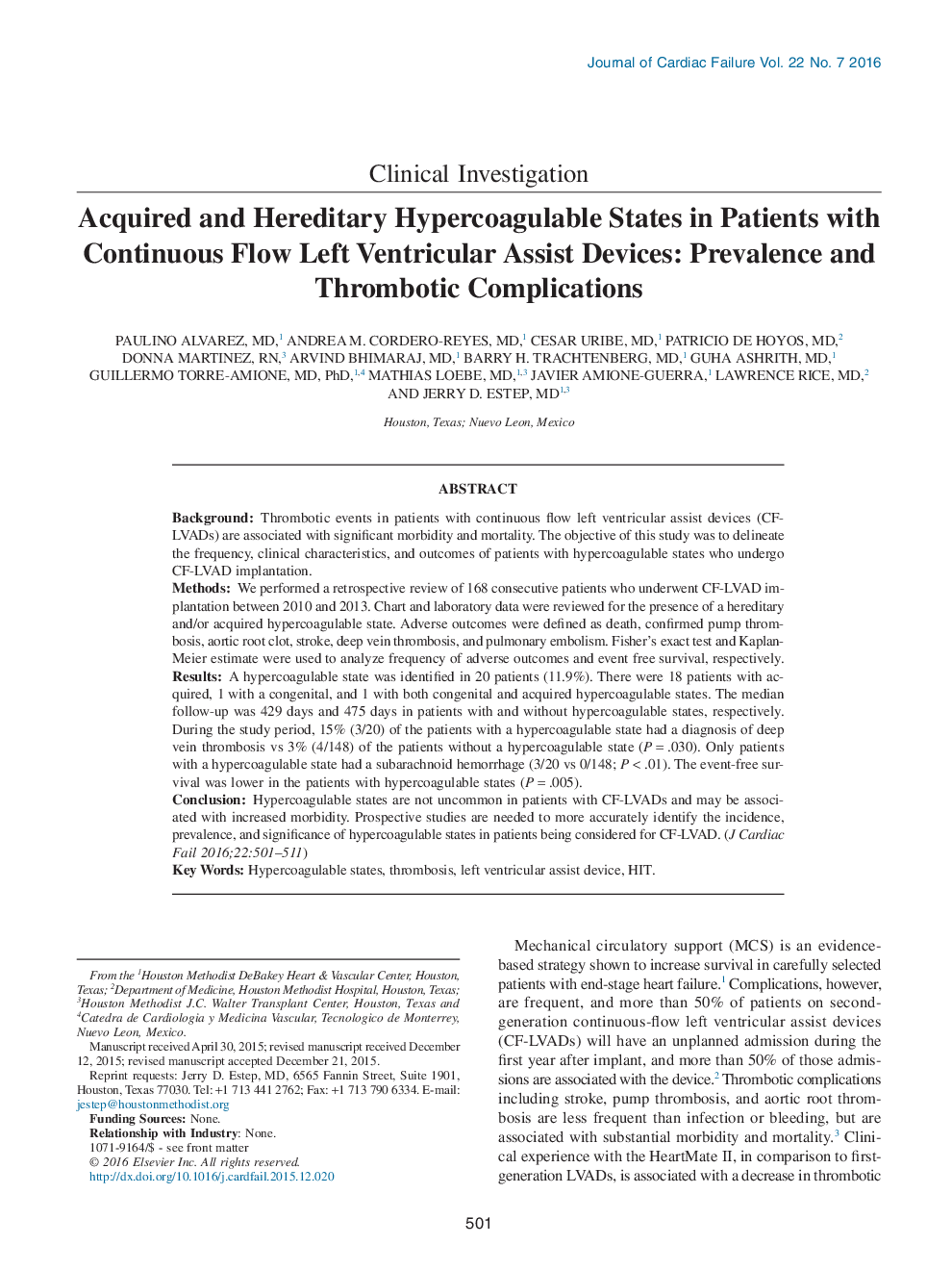| کد مقاله | کد نشریه | سال انتشار | مقاله انگلیسی | نسخه تمام متن |
|---|---|---|---|---|
| 2958292 | 1178285 | 2016 | 11 صفحه PDF | دانلود رایگان |
• A hypercoagulable state (HCS) was identified in 20 patients (11.9%) with continuous flow left ventricular assist device (CF-LVAD).
• The majority of HCS were acquired.
• HCS may be associated with a lower event-free survival; however, further studies are needed.
• A focused and clinically guided evaluation of HCS in CF-LVAD patients may be useful.
BackgroundThrombotic events in patients with continuous flow left ventricular assist devices (CF-LVADs) are associated with significant morbidity and mortality. The objective of this study was to delineate the frequency, clinical characteristics, and outcomes of patients with hypercoagulable states who undergo CF-LVAD implantation.MethodsWe performed a retrospective review of 168 consecutive patients who underwent CF-LVAD implantation between 2010 and 2013. Chart and laboratory data were reviewed for the presence of a hereditary and/or acquired hypercoagulable state. Adverse outcomes were defined as death, confirmed pump thrombosis, aortic root clot, stroke, deep vein thrombosis, and pulmonary embolism. Fisher's exact test and Kaplan-Meier estimate were used to analyze frequency of adverse outcomes and event free survival, respectively.ResultsA hypercoagulable state was identified in 20 patients (11.9%). There were 18 patients with acquired, 1 with a congenital, and 1 with both congenital and acquired hypercoagulable states. The median follow-up was 429 days and 475 days in patients with and without hypercoagulable states, respectively. During the study period, 15% (3/20) of the patients with a hypercoagulable state had a diagnosis of deep vein thrombosis vs 3% (4/148) of the patients without a hypercoagulable state (P = .030). Only patients with a hypercoagulable state had a subarachnoid hemorrhage (3/20 vs 0/148; P < .01). The event-free survival was lower in the patients with hypercoagulable states (P = .005).ConclusionHypercoagulable states are not uncommon in patients with CF-LVADs and may be associated with increased morbidity. Prospective studies are needed to more accurately identify the incidence, prevalence, and significance of hypercoagulable states in patients being considered for CF-LVAD.
Journal: Journal of Cardiac Failure - Volume 22, Issue 7, July 2016, Pages 501–511
